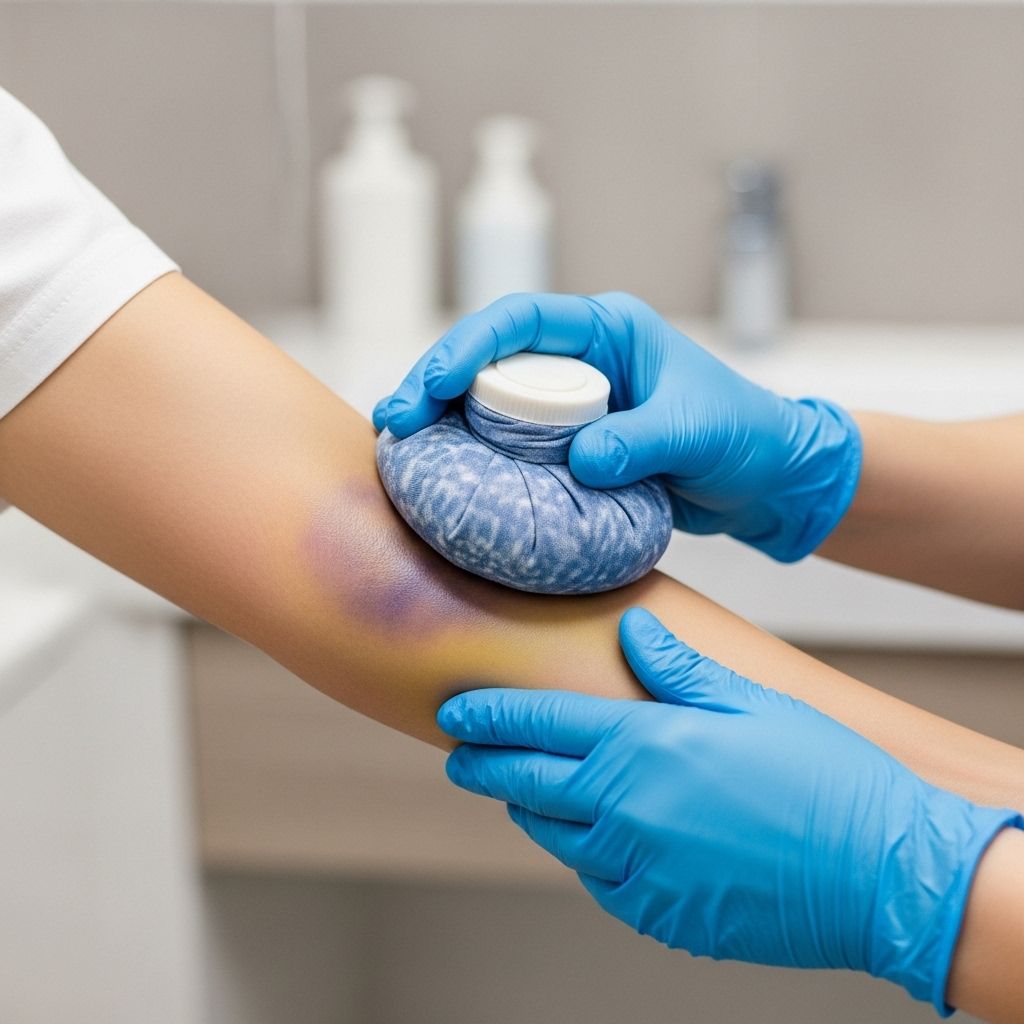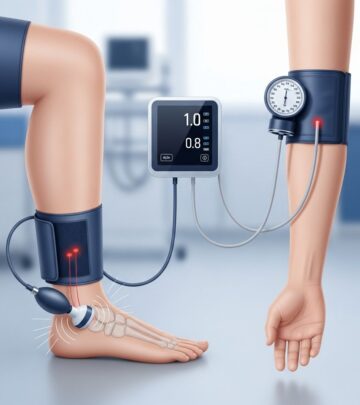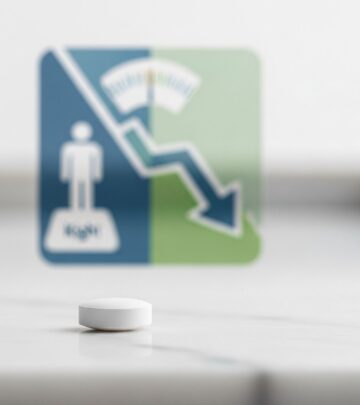Bruise First Aid: Essential Steps for Prompt and Safe Recovery
Learn the effective first aid steps for treating bruises, recognizing when to seek medical help, and promoting safe, swift healing.

Bruise: First Aid Basics
A bruise occurs when small blood vessels under the skin rupture due to an impact, causing blood to pool in surrounding tissues. This results in a visible discoloration, often black, blue, or purple at first, which fades as the mark heals. Understanding first aid for bruises is essential for effective management and recovery, as most bruises can be safely treated at home. But it’s also important to know when medical care is required.
How Bruises Form
- A blow or impact damages vessels near the skin’s surface.
- Blood leaks into tissues, creating the characteristic color change.
- Bruise colors shift from deep hues to lighter yellows and greens as healing progresses.
Treatment: First Aid Steps for Bruises
Most minor bruises heal with simple self-care. Follow these essential first aid steps for optimal recovery:
- Elevate the bruised area: If possible, raise the injured body part above heart level. This minimizes blood flow and reduces swelling.
- Apply an ice pack: Wrap ice in a thin towel and place on the bruise for 10–20 minutes at a time. Repeat several times a day for the first 48 hours. This helps decrease swelling, inflammation, and pain.
- Compress the area: If there is swelling, lightly wrap the bruise with an elastic bandage. Ensure it’s snug but not too tight to avoid cutting off circulation.
- Rest: Limit activities that involve the injured area to prevent further damage and accelerate healing.
For most bruises, if your skin isn’t broken, there’s no need to apply any bandage. Consider taking a nonprescription pain reliever if you experience discomfort. Always follow medication instructions and avoid excessive doses, which can worsen bleeding in some individuals.
The RICE Method
| Step | Action | Purpose |
|---|---|---|
| Rest | Avoid activity with the injured area | Minimize irritation and promote healing |
| Ice | Apply ice pack for 10–20 minutes, several times daily | Reduce pain and swelling |
| Compress | Wrap area with elastic bandage if swollen | Limit swelling |
| Elevate | Keep bruised area above the heart, if possible | Decrease blood flow, reduce swelling |
When to Consult a Healthcare Professional
While most bruises are mild, certain signs and symptoms require medical evaluation:
- Intense pain or very painful swelling in the bruised area.
- Prolonged pain that persists beyond three days after a minor injury.
- Frequent, large, or painful bruises—especially those that appear on the trunk, back, or face or with no apparent cause.
- Bruises that suddenly begin or seem to develop without reason.
- Family or personal history of easy bruising or unusual bleeding.
- A lump forming over a bruise, possibly indicating a hematoma—pooled blood in tissues.
- Unusual bleeding elsewhere, such as frequent nosebleeds or bleeding gums.
- Suspected abuse, especially if bruises occur in children, elderly adults, or appear in unusual locations.
If you experience any of these symptoms, contact your healthcare provider promptly. They may perform a physical exam, review medical history, and order tests for blood clotting and platelet function.
Understanding Bruise Healing
Bruises change appearance as blood under the skin is reabsorbed:
- Early stage: Black, blue, or purple coloration.
- Intermediate stage: Green or yellow as hemoglobin breaks down.
- Later stage: Pale yellow or brown, signaling healing completion.
Most bruises resolve fully within two to four weeks, but some may linger longer, especially if you’re older or have underlying health conditions.
Potential Complications: Hematoma and Other Concerns
Occasionally, trauma causes a significant pool of blood—a hematoma—under the skin or in deeper tissues, presenting as a lump. Hematomas usually heal without intervention but may require evaluation if they become large, painful, or restrict movement.
Other Causes of Bruising
- Certain medications (e.g., blood thinners, aspirin, corticosteroids).
- Underlying clotting disorders or platelet abnormalities.
- Vitamin deficiencies (especially vitamin K or C).
- Aging, which leads to thinner skin and fragile blood vessels.
Preventing Bruises and Injury
While some bruising is unavoidable, simple lifestyle strategies can minimize your risk:
- Maintain good lighting in your living spaces.
- Reduce clutter and avoid loose rugs, especially on stairs.
- Position furniture and cords out of main walking paths.
- Review medication side effects with your doctor or pharmacist, especially if they cause dizziness or drowsiness.
- Get regular vision and hearing checks—even mild deficits can increase fall risk.
FAQs: Bruise First Aid and Management
Q: How long does it take for a bruise to heal?
A: Most bruises heal within two to four weeks. Complete color resolution can take a bit longer, especially in older adults or those with underlying health concerns.
Q: Can I use heat to treat a bruise?
A: Cold therapy is recommended within the first 48 hours to limit swelling. Heat may be applied gently after swelling has subsided, but should be used cautiously to avoid further bleeding.
Q: When do bruises require professional care?
A: Seek medical attention for unexplained, persistent, or severe bruising, bruises accompanied by excessive pain or swelling, signs of abnormal bleeding, or any suspicion of child, elder, or domestic abuse.
Q: Should I be concerned about frequent bruising?
A: Frequent or unprovoked bruising may signal an underlying health condition, including bleeding disorders or medication effects. Consult your healthcare provider for evaluation.
Q: Are children and older adults at greater risk of bruising?
A: Yes, children and older adults have more fragile skin and blood vessels, making them prone to bruising. Falls or minor bumps often result in visible marks. Careful supervision and adaptations at home help reduce risk.
Special Considerations: Black Eye Treatment
A black eye is a bruise around the eye caused by impact and bleeding under the skin. Follow these steps for immediate care:
- Gently apply a cold compress (avoid pressure on the eye itself).
- Repeat cold therapy several times a day for the first 24–48 hours.
- Switch to warm compresses after swelling decreases, if needed.
Seek medical help if you notice:
- Blood in the eye’s white or colored parts
- Vision changes (double or blurred vision)
- Severe pain, bleeding from the nose, or bruising around both eyes
Summary Table: When to Treat at Home vs. See a Doctor
| Home Care | Doctor Visit Needed |
|---|---|
| Minor injury with mild pain/swelling | Severe pain, swelling, or lump over bruise |
| Bruise changing color and shrinking | Persistent pain or swelling past 3 days |
| Occasional bruise from known impact | Frequent, large, or unexplained bruises |
| No unusual bleeding elsewhere | Unusual bleeding from nose/gums |
Conclusion
Bruising is a common occurrence and mostly resolves with simple first aid: rest, ice, compression, and elevation. Recognizing the signs that require medical attention ensures your safety and swift recovery. Take steps to prevent injuries, and don’t hesitate to seek professional guidance if any warning signs appear.
Read full bio of medha deb












